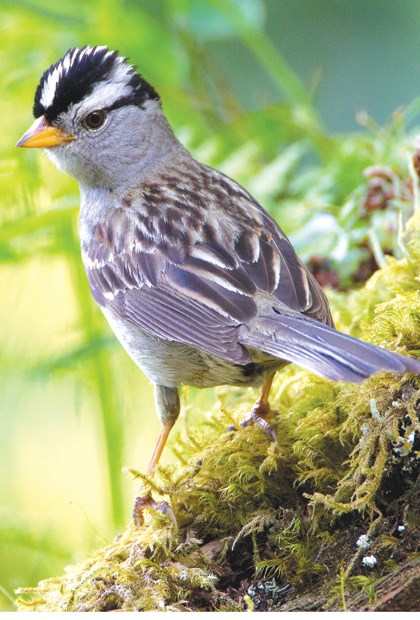Maple leaves ablaze with colour, crisp cool mornings and a wealth of birds - that's November.
One of the big changes in mid-autumn is the number of water birds - it can be quite dramatic. Aquatic species are seen in ever-increasing numbers in both marine and freshwater habitats.
Species like the common loon breed on interior fresh water lakes, spending the winter on the coast. This is also true of red-necked, horned and western grebes. These birds lose their summer (breeding) plumages, which can make identification a little more challenging. For example, the common loon will lose its necklace, the red-necked grebe's neck becomes grey and the horned grebe has no horns (really feather tufts).
Waterfowl that breed on interior freshwater lakes now move into southwestern B.C. for the winter. Numbers of dabbling ducks, like northern pintails, green-winged teal and American wigeon build up through November at the Conservation Area at Maplewood's tidal (mud) flats. It's fun to scan through the flocks of American wigeon to spot a rare Eurasian wigeon. One or more Eurasians are often mixed with the flocks of Americans - a hybrid is also possible.
Diving ducks, like bufflehead, common goldeneye, Barrow's goldeneye and greater scaup are usually spotted in deeper waters off Burrard Inlet. The beautiful ring-necked duck and gorgeous hooded merganser are more commonly seen on freshwater ponds at Maplewood and Ambleside. The lovely rainbow coloured wood duck, a resident species, should also be looked for in freshwater habitats. The colourful harlequin duck breeds along fastflowing mountain streams in summer, spending its winters in marine habitats like Burrard Inlet. Watch for it at Maplewood, Cates Park or Ambleside Park, diving for small crabs.
Shorebirds have already passed through the North Shore on their way to wintering grounds as far away as South America, but a few stay. At Maplewood, watch for dunlin and greater yellowlegs on the upper shore of Maplewood's mud flats. Killdeer and Wilson's snipe are two resident shorebirds that should be watched for as well.
Gulls are always fun, and sometimes a challenge to identify. Our common glaucous-winged gull, for example, hybridizes with other gulls, like the western, which is sometimes known as the Olympic gull. A common gull along Maplewood's shores is the delicate mew gull, but watch also for ring-billed, Thayer's and California gulls. Interestingly there is no gull called the sea gull.
Any place birds gather there are predators, both mammalian and avian. November (and in fact all winter) is a good time to watch for the redtailed hawk, peregrine falcon, merlin and bald eagle, often perched on offshore dolphins. Small ducks, dunlin and pigeons are favourite prey of the peregrine falcon locally, and to watch it hunt can be very dramatic indeed.
Small birds, like darkeyed juncos, have now moved back to the North Shore in good numbers along with goldencrowned, white-crowned, and fox sparrows. You may also be lucky enough to spot a rare white-throated sparrow, especially at a bird feeder.
Enjoy November's birds and keep safe.
Al Grass is a naturalist with Wild Bird Trust of British Columbia, which offers free walks at the Conservation Area at Maplewood Flats on the second Saturday of every month. The next walk will be Saturday, Nov. 8 starting at 10 a.m. Participants will look for wintering waterfowl and sparrows. Meet at WBT's site office, 2645 Dollarton Hwy. Walks go rain or shine.



